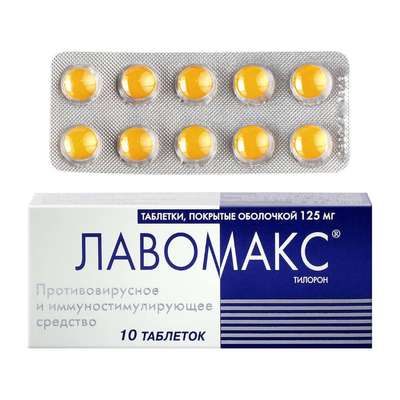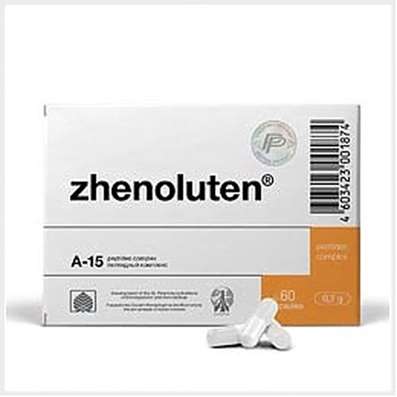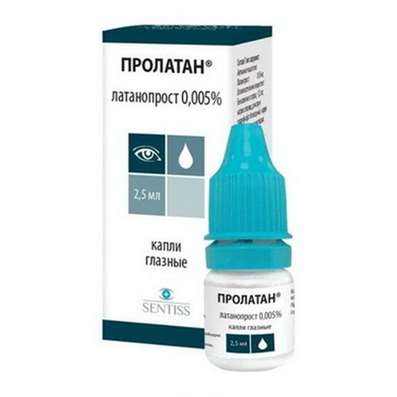Instruction for use: Tacrolimus (Tacrolimusum)
I want this, give me price
Pharmacological group
Immunosuppressive drugs
CAS104987-11-3
pregnancy and lactation
The action category for fetus by FDA is C.
Pharmacotherapy
Tacrolimus binds to the cytosolic protein (FKBP12), which is responsible for intracellular cumulation of the drug. Complex FKVP12-tacrolimus specifically and competitively interacting with calcineurin inhibits it, which leads to calcium-dependent inhibition of T-cell signal transduction pathways and prevention of transcription of a discrete group of lymphokine genes. Suppresses the formation of cytotoxic lymphocytes, which are mainly responsible for graft rejection, reduces T-cell activation, T-helper dependent B-cell proliferation, and the formation of lymphokines (such as interleukins-2 and 3 and gamma-interferon), expression of interleukin-2 receptor.
Pharmacokinetics
Absorbed mainly from the upper gastrointestinal tract. Food intake with moderate fat content reduces the rate and degree of absorption, reduces AUC by 27% and Cmax by 50%, increases Tmax by 173%. Isolation of bile does not affect absorption. TCmax - 1-3 hours. In some patients, the drug is continuously absorbed for a long period of time, reaching a relative level of the absorption profile. TCss - 3 days after oral administration of 0.3 mg / kg / day in patients with liver transplant. There is a pronounced correlation between AUC and Cmin in the blood upon reaching Css. The distribution after intravenous administration of the drug is biphasic. Much associated with red blood cells. The ratio of the distribution in the whole blood of plasma concentrations is 20: 1. Linkage with proteins - 98.8% (mainly with serum albumin and alpha-1-acid glycoprotein). Widely distributed in the body. Volume distribution in the plasma - 1300 liters, in whole blood - 47.6 liters. The total clearance (by concentration in whole blood) - an average of 2.25 l / h; in adult patients with a liver and kidney transplant - 4.1 liters / h and 6.7 l / h, respectively. In children with a liver transplant, the total clearance is 2 times higher than in adult patients with a liver transplant. It is largely metabolized in the liver with the participation of CYP3A4 with the formation of 8 metabolites, one of which has significant immunosuppressive activity. T1 / 2 from whole blood - about 43 hours; in adult patients and children with liver transplantation - 11.7 hours and 12.4 hours, respectively, in adult patients with a kidney transplant - 15.6 hours. After IV and oral administration, it is mainly excreted with feces, 2% is excreted in the urine . Less than 1% is displayed unchanged.
Indications
Prevention and treatment of rejection of liver, kidney and heart allograft, incl. resistant to standard regimens of immunosuppressive therapy.
Contraindications
Hypersensitivity (including macrolides and polyoxyethylated hydrogenated castor oil (HCO-60)).
Dosing
Inside and in / in. The dose is selected individually, depending on the results of monitoring the concentration of the drug in the blood.
Inside: daily dose divided into 2 doses (morning and evening). Capsules should be taken immediately after removing them from the blister pack, fasting or 1 hour before or 2-3 hours after ingestion, swallow whole, squeezed with liquid (preferably water) or if necessary, the contents of the capsules can be dissolved in water and injected through a nasogastric tube .
It is not recommended to enter a stream! Use only clear and colorless solutions. In / in the drip (5 mg / ml diluted with 5% dextrose solution or 0.9% NaCl solution). The concentration of the infusion solution should vary between 0.004-0.1 mg / ml. The total volume of infusions in 24 hours is 20-500 ml.
Liver transplantation.
Primary immunosuppression in adults: oral - 0.1-0.2 mg / kg / day. The drug should be started 12 hours after the operation is completed. If the patient's condition does not allow taking the drug inside, IV infusion is 0.01-0.05 mg / kg / day for 24 hours. Primary immunosuppression in children: oral - 0.3 mg / kg / day. If the patient's condition does not allow taking the drug inside, IV infusion - 0.05 mg / kg / day for 24 hours.
Supportive therapy in adults and children: the dose is usually reduced; in some cases, tacrolimus can be used as a basic monotherapy (cancellation of concomitant immunosuppressive drugs). Improving the patient's condition after transplantation can alter the pharmacokinetics of tacrolimus, which may require dose adjustment. Children usually need doses of 1.5-2 times the dose for adults.
Treatment of rejection reactions in adults and children: higher doses of tacrolimus should be used in combination with SCS and short courses of mono / polyclonal antibodies. In case of signs of toxicity, it may be necessary to reduce the dose of tacrolimus.
Kidney transplantation.
Primary immunosuppression in adults: patients who do not undergo basic therapy (aimed at stimulating the production of antibodies) orally - 0.3 mg / kg / day. The drug should be started approximately 24 hours after the operation is completed.
Patients receiving basic therapy inside - 0.2 mg / kg / day. If the patient's condition does not allow taking the drug inside, IV drip - 0,05-0,1 mg / kg / day for 24 hours.
Primary immunosuppression in children: before surgery - inside by 0.15 mg / kg. After the operation - iv drip 0,075-0,1 mg / kg / day for 24 hours with the transition to oral intake of 0.3 mg / kg / day.
Supportive therapy in adults and children: the dose is usually reduced; in some cases, tacrolimus can be used as a basic monotherapy (cancellation of concomitant immunosuppressive drugs). Improving the patient's condition after transplantation can alter the pharmacokinetics of tacrolimus, which may require dose adjustment. The dose is selected individually, in accordance with the results of the clinical evaluation of the rejection process and the tolerability of the drug. If the clinical signs of rejection are obvious, consider changing the regimen of immunosuppressive therapy.
Treatment of rejection reactions in adults and children: higher doses of tacrolimus should be used in combination with SCS and short courses of mono / polyclonal antibodies. In case of signs of toxicity, it may be necessary to reduce the dose of tacrolimus.
Reaction of rejection of a heart transplant.
Initial therapy of rejection reaction: oral - 0.3 mg / kg / day. If the clinical condition of the patient does not allow him to take the drug inside, IV infusion - 0.05 mg / kg / day for 24 hours.
Patients with severe hepatic impairment may require a dose reduction; with CRF, no dose adjustment is required, however, due to the presence of nephrotoxic action in tacrolimus, it is recommended that the kidney function is carefully monitored (including serum creatinine, QC and diuresis).
Transfer with cyclosporine: treatment should be started after the determination of the concentration of cyclosporine in the blood plasma and the clinical state of the patient. The use of the drug should be postponed if there is an increased concentration of cyclosporine. In practice, treatment is started 12-24 h after cessation of cyclosporine. Therapy begins with the initial oral dose recommended for primary immunosuppression in a specific allograft (in adults and children).
Side effect
Very often (more than 1/10); often (more than 1/100 and less than 1/10); not often (more than 1/1000 and less than 1/100); rarely (more than 1/10000 and less than 1/1000); very rarely (less than 1/10000, including single cases).
On the part of the CAS: very often - increased blood pressure, often - lowering blood pressure, tachycardia, arrhythmias, conduction disorders, thromboembolism, ischemia, angina, vascular disease; not often - changes on the ECG, heart attack, CH, shock, myocardial hypertrophy, cardiac arrest.
From the digestive system: very often - diarrhea, nausea, vomiting; often - a violation of the function of the gastrointestinal tract (including dyspepsia), increased activity of "liver" enzymes, abdominal pain, constipation, changes in body weight, anorexia, inflammation and ulcers of the gastrointestinal tract, jaundice, dysfunction of the biliary tract and gallbladder; not often - ascites, intestinal obstruction, hepatotoxicity, pancreatitis; rarely - liver failure.
From the hemopoiesis: often - anemia, leukopenia, thrombocytopenia, hemorrhage, leukocytosis, blood coagulation disorders; not often - suppression of hemopoiesis, incl. pancytopenia, thrombotic microangiopathy.
From the side of urinary function: very often - a violation of kidney function (including hypercreatininaemia); often - renal tissue damage, kidney failure; not often - proteinuria.
From the side of metabolism: very often - hyperglycemia, hyperkalemia, hyperglycemia; often - hypomagnesemia, hyperlipidemia, hypophosphatemia, hypokalemia, hyperuricemia, hypocalcemia, acidosis, hyponatremia, hypovolemia, dehydration; not often - hypoproteinuria, hyperphosphatemia, increased amylase, hypoglycemia.
From the side of the musculoskeletal system: often - convulsions; not often - myasthenia gravis, arthritis.
From the nervous system and sensory organs: very often - tremor, headache, insomnia; often dysesthesia (including paresthesia), visual disturbances, confusion, depression, dizziness, agitation, neuropathy, convulsions, ataxia, psychosis, anxiety, nervousness, sleep disturbance, impaired consciousness, emotional lability, hallucinations, hearing impairment, violation of thinking, encephalopathy; not often - increased intracranial pressure, eye diseases, amnesia, cataracts, speech disorders, paralysis, coma, deafness; very rarely - blindness.
On the part of the respiratory system: often - violation of breathing (including shortness of breath), pleural effusion; not often - atelectasis of the lungs, bronchospasm.
From the skin: often - itching, alopecia, rash, sweating, acne, photosensitivity; not often - hirsutism; rarely - Lyell's syndrome; very rarely - Stevens-Johnson syndrome.
Other: very often - localized pain (including arthralgia); often - fever, peripheral edema, asthenia, impaired urination; not often - swelling of the genitals and vaginitis in women.
Neoplasms: development of benign and malignant tumors, incl. associated with the Epstein-Barr virus, lymphoproliferative diseases and skin cancer.
Allergic and anaphylactic reactions.
Development of viral, bacterial, fungal and protozoal diseases; worsening of the course of previously diagnosed infectious diseases.
In rare cases, there was a development of ventricular hypertrophy or hypertrophy of the interventricular septum, registered as cardiomyopathy, mainly in children. Risk factors are pre-existing heart disease, use of GCS, arterial hypertension, impaired renal or hepatic function, infection, hyperhydration, swelling.
In case of accidental / a or perivascular injection, irritation may occur at the site of administration.
When administered orally, the incidence of side effects is lower than with the / in the introduction.
Overdose
Symptoms: tremor, headache, nausea, vomiting, infection, urticaria, lethargy, increased blood urea nitrogen concentration and hypercreatininaemia, increased ALT activity.
Treatment: symptomatic; after oral administration - washing the stomach and / or taking adsorbents (activated charcoal). There is no specific antidote. Due to the high molecular weight, poor solubility in water and high coupling with red blood cells and plasma proteins, dialysis is not expected to be effective. In individual patients (with a very high concentration of the drug in the blood plasma), hemofiltration and diafiltration were effective, reducing the toxic concentrations of the drug. The clinical experience of overdose management is limited.
Interaction
Simultaneous intake of substances that inhibit or induce CYP3A4 can affect the metabolism of tacrolimus, and accordingly reduce or increase the concentration of tacrolimus in the blood plasma.
It can affect the metabolism of drugs metabolized by CYP3A4 (including cortisone, testosterone).
Due to the high degree of binding to tacrolimus proteins, interaction with other drugs with high affinity for blood proteins (including NSAIDs, oral anticoagulants and hypoglycemic agents for oral administration) is possible.
Simultaneous reception of neuro- and nephrotoxic drugs (including aminoglycosides, inhibitors of gyrase, vancomycin, co-trimoxazole, NSAIDs, ganciclovir, acyclovir) increases the risk of neuro- and nephrotoxicity.
The risk of developing hyperkalemia increases with simultaneous use with K + and potassium-sparing diuretics (including amiloride, triamterene, spironolactone).
It is necessary to avoid the introduction of live attenuated vaccines against the background of tacrolimus therapy (possibly reducing the effectiveness of vaccines).
Increase the concentration of tacrolimus in the blood plasma (ketoconazole, fluconazole, itraconazole, clotrimazole, voriconazole, nifedipine, nicardipine, erythromycin, clarithromycin, josamycin, HIV protease inhibitors, danazol, ethinyl estradiol, omeprazole, BCCC (incl. diltiazem), nefazodone, grapefruit juice.
Reduce the concentration of tacrolimus in the blood plasma (may require correction of their dose): rifampicin, phenytoin, phenobarbital, St. John's wort.
Tacrolimus increases the concentration of phenytoin in the blood plasma.
Methylprednisolone may increase or decrease the concentration of tacrolimus.
Amphotericin B, ibuprofen increase the risk of developing tacrolimus nephrotoxicity.
Increases T1 / 2 cyclosporine, with the possible increase in toxic effects. It is not recommended simultaneous administration of cyclosporine and tacrolimus in patients who previously received cyclosporine. It is advisable to use caution when transferring patients from cyclosporine to tacrolimus therapy (a control of the concentration of cyclosporin is necessary).
Inhibit the metabolism of tacrolimus: bromocriptine, cortisone, dapsone, ergotamine, gestodene, lidocaine, mephenitoin, miconazole, midazolam, nilvadipine, poretidron, quinidine, tamoxifen, oleandomycin, verapamil.
Induced tacrolimus metabolism: carbamazepine, metamizole, isoniazid.
May affect the metabolism of oral contraceptives (alternative methods of contraception should be used).
It is necessary to avoid the joint use of the reconstituted concentrate for infusions with other drugs that change the pH of the solution (including acyclovir and ganciclovir). in alkaline medium tacrolimus is not stable.
Special instructions
Recommendations for achieving the required concentration of the drug in the whole in the blood: in the early postoperative period, Cmin tacrolimus should be monitored in whole blood. When administered orally to determine Cmin, blood samples must be obtained 12 hours after taking tacrolimus, immediately before the next dose. The frequency of Cmin control depends on the clinical need. Because tacrolimus has a low clearance, correction of the dosing regimen may take several days until the changes in the concentration of the drug in the blood become apparent. Cmin should be monitored 2 times a week during the early post-transplant period and then periodically during maintenance therapy. It is also necessary to monitor Cmin after changing the dose, immunosuppressive regimen, or after sharing with drugs that can affect tacrolimus concentrations in whole blood. The results of the analysis of clinical studies suggest that successful treatment is achieved at Cmin below 20 ng / ml.
In clinical practice, during the early post-transplant period, Cmin in whole blood was 5-20 ng / ml in liver transplant recipients and 10-20 ng / ml in patients with a kidney transplant. Therefore, in the course of maintenance therapy, the drug concentration in the blood should be 5-15 ng / ml in liver and kidney transplant recipients.
The development of lymphoproliferative diseases associated with the Epstein-Barr virus (EBV) has been noted, which may be caused by excessive immunosuppression prior to the use of this drug. When transferring to tacrolimus therapy, concomitant anti-lymphocytic therapy is contraindicated. EBV-negative children under 2 years of age have an increased risk of developing lymphoproliferative diseases (before the treatment, the serological definition of EBV is needed).
It penetrates the placenta and is excreted in breast milk. Safety of use in pregnant women is not established, so do not prescribe the drug during pregnancy, except when the intended benefit to the mother exceeds the potential risk to the fetus. During the period of treatment it is recommended to cancel breastfeeding.
In the initial post-transplant period, it is necessary to monitor blood pressure, ECG, neurological and ophthalmologic status, fasting blood glucose concentration, plasma proteins, electrolytes (especially K +), liver and kidney function, clinical blood analysis, blood coagulation.
Due to the potential risk of developing malignant skin diseases during treatment, exposure to sunlight and UV radiation should be limited, protecting the skin with clothing and using creams with a high protective factor.
Concentrate for the preparation of a solution for intravenous administration contains polyoxyethylated hydrogenated castor oil, which can cause anaphylactic reactions. The risk of developing an anaphylactic reaction can be reduced by introducing a reduced concentrate at a low rate or by pre-administration of antihistamines.
Unused concentrate for IV administration in an open ampoule or unused reconstituted solution must be disposed of immediately to avoid bacterial contamination.
Tacrolimus is incompatible with polyvinyl chloride (absorbed by polyvinylchloride plastic) - tubes, syringes, nasogastric probes and other devices used to prepare and administer a concentrate for infusions or capsule contents, the probe must not contain polyvinyl chloride.
During the treatment period, it is recommended to refrain from engaging in potentially dangerous activities that require an increased concentration of attention and speed of psychomotor reactions (including driving).

 Cart
Cart





